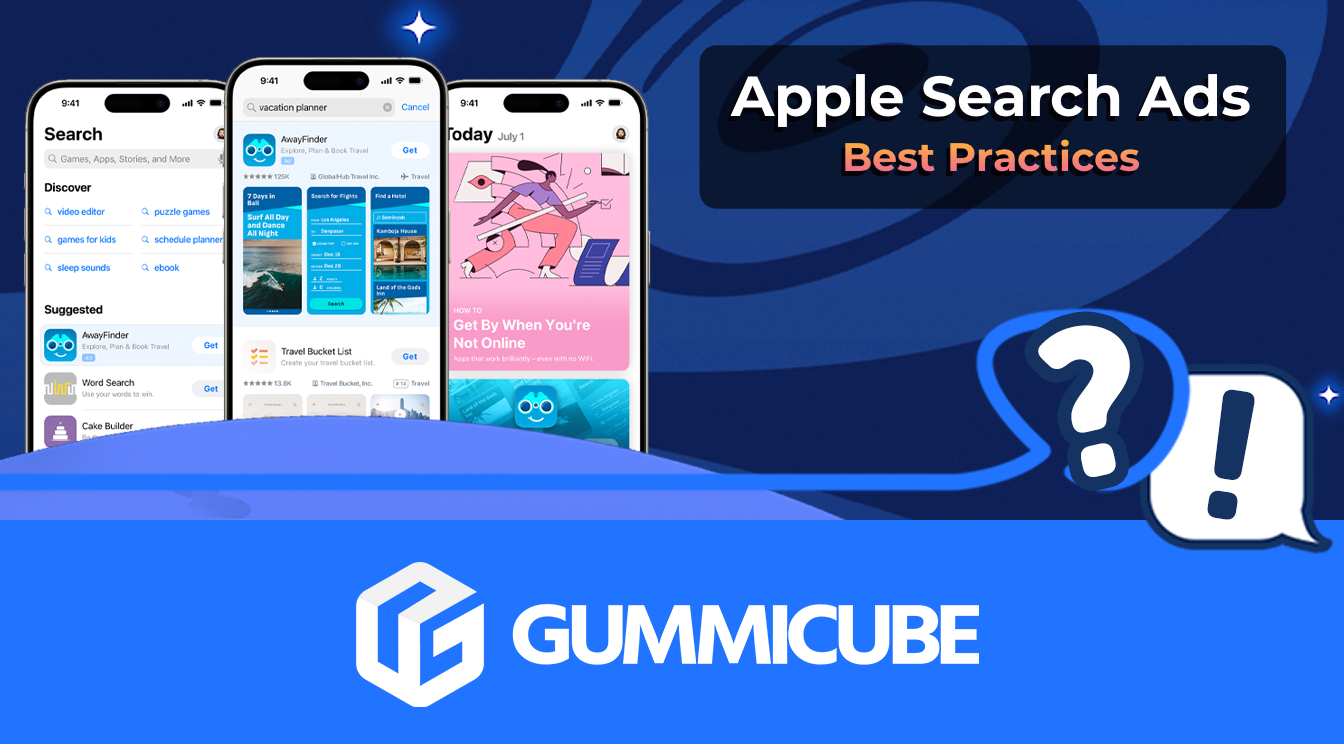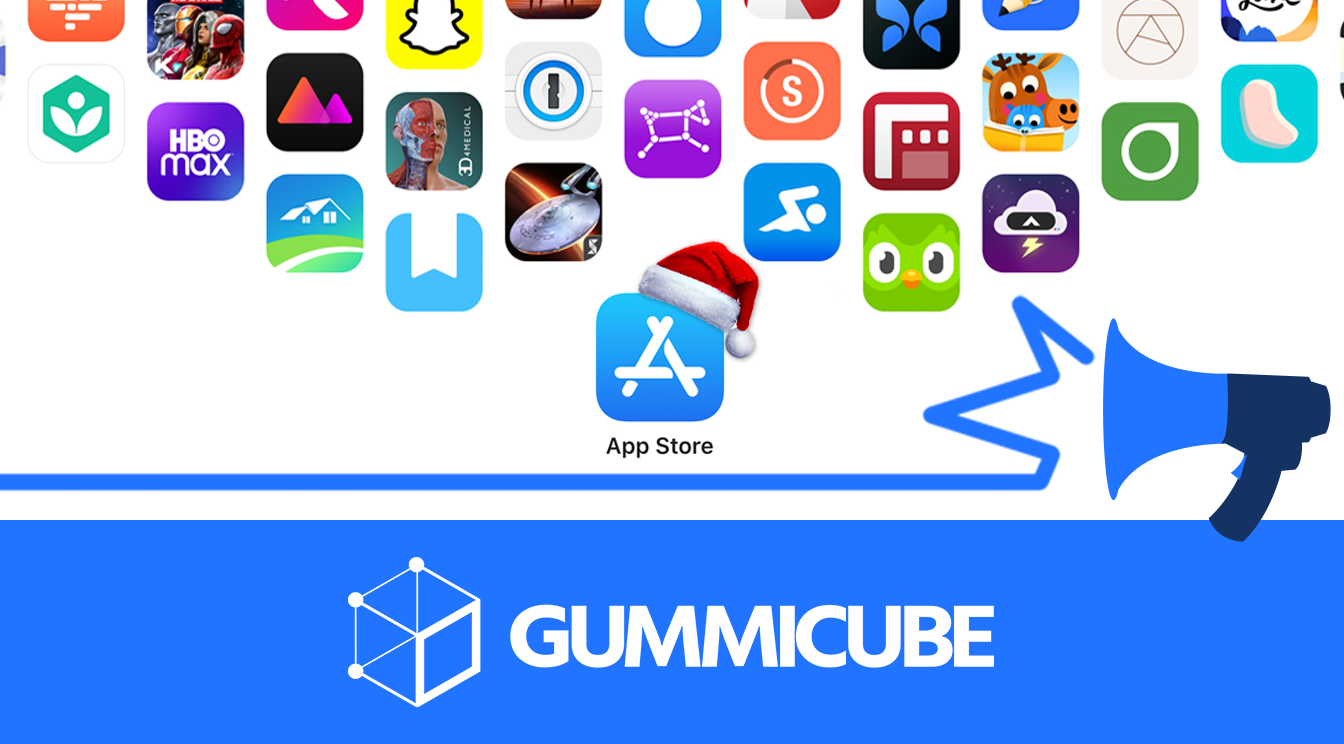
5 Best Practices for Apple Search Ads
Posted on July 3rd, 2024
Are you leveraging Apple Search Ads the right way? Take a look at these recommendations to optimize your paid campaigns and target the right users.

Screenshots are one of the most crucial components for conversion. When a user discovers your app on the App Store and Play Store, you’ll want to make a strong impression. Users typically spend 2-3 seconds on a single search result before they either download or move on.
As screenshots play a large role in conversions, it’s important to constantly test, update and optimize your screenshots – especially after a store undergoes a change.
Your screenshots will show users what they can expect from your app, not just in terms of visuals, but also for functionality. Each screenshot should be designed to be engaging and informative, as optimized creatives can increase click-through-rates.
There are several aspects to keep in mind when designing creative sets. Your screenshots should:
On the Apple App Store, developers have ten screenshots with which to do this. On Google Play, they have eight.
The best way to start off with strong screenshots is to research what is currently working. Look at your competitors and see what they’re doing, then identify what aspects of their screenshots are common across the field and perform well.
There may be certain design elements that appeal to users. You can identify these by seeing what themes or designs are recurring across the top performers. Likewise, if any underperforming apps feature screenshots designed a certain way, you may want to avoid repeating their mistakes.
This will give you a solid baseline to start from. You can apply certain design elements that perform well to your own app, such as image placement and what features are focused on first.
The best way to ensure your screenshots are performing at their best is to constantly test new iterations. You can see how different variants of an app’s screenshots perform by running A/B tests, such as through Splitcube or Google Play Experiments.
These tests will run two or more versions of an app against each other to determine which has a better impact on click-through-rates and conversions. By testing individual aspects at a time, you can identify distinct elements that provide the best conversions.
Be sure to check and test new variants frequently. User tastes may change, and there’s always room to improve.
When the App Store or Play Store redesign their displays, this can have an impact on how your screenshots are displayed.
It is advised to include a “safe zone” at the edges of your screenshots that provide a buffer for important information and the ends of the images. This will help maintain the design when viewed on different sizes and shapes of screens.
For instance, a recent Google Play update changed how screenshots are spaced out when viewed on a mobile device. Developers of apps that feature connected screenshots, where one image feeds into the next through connected iconography, found their screenshots unaligned. They now have to redesign and test their screenshots to either get the same effect on a new design or change the connected screenshots altogether.

Similarly, when new devices come out, developers should design screenshots for those devices. For instance, when iPhone X came out, its taller and thinner screen size created display issues for many screenshots. Developers needed to design new screenshots built for the iPhone X display in order to properly showcase their apps. While using different screenshots for different devices was first suggested by Apple, it’s now mandatory for apps.
When iOS 13 comes out, design trends may change as well. Developers should keep a close eye on how the App Store changes and how well their screenshots perform after the new OS comes out.
Screenshots are important parts of an app’s optimization and should be given proper consideration and testing. This includes researching trends and competitors, testing and reiterating.
When the stores change their designs or new devices come out, developers need to pay close attention to how their screenshots look and create new sets if necessary. Keeping your screenshots optimized can have a positive impact on your CTR and conversions.
Want more information regarding App Store Optimization? Contact Gummicube and we’ll help get your strategy started.

Are you leveraging Apple Search Ads the right way? Take a look at these recommendations to optimize your paid campaigns and target the right users.

Ghostly happenings are among us... and in your app listing too? If you aren't leveraging the power of app seasonality to make relevant tweaks to your store listing you're leaving precious engagement and conversions on the table.

Developers on the iOS App Store should plan in advance of the upcoming Holiday Schedule to allow enough time for apps to get approved during the busy holidays.